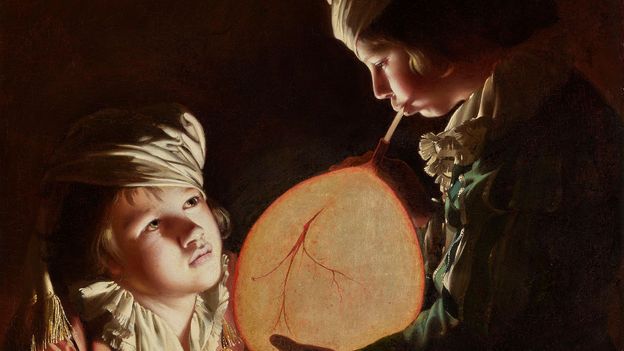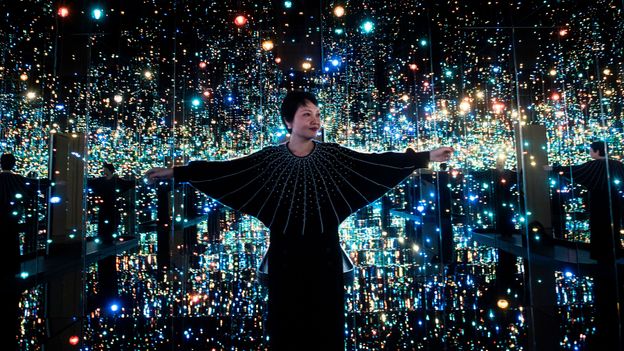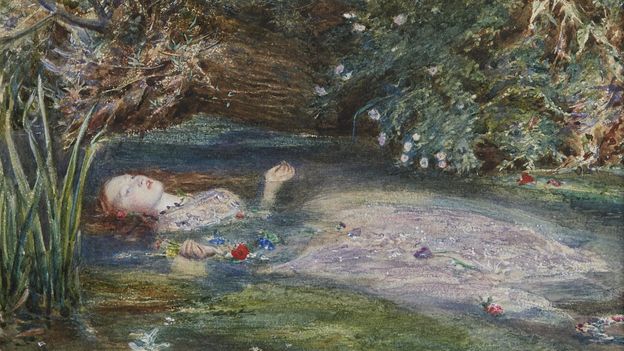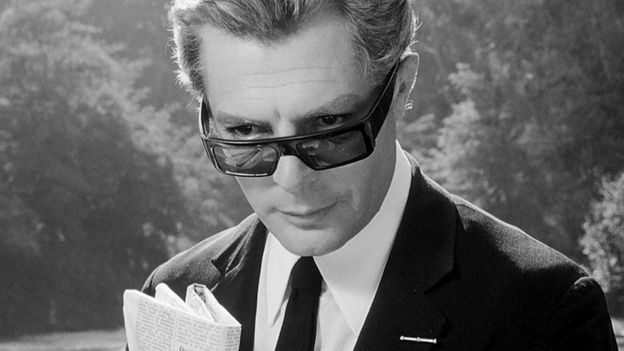Executed exactly half a century after Wright of Derby’s charming painting and embered by something of the same amber aura of inner awe, Caspar David Friedrich’s Two Men Contemplating the Moon (1819-20) seems almost to catch up with the same pair of childhood chums approaching maturity – their sustained astonishment at the beauty of the world they share having been enriched by decades of intense discovery. Here, the orb that swells resplendently before their eyes might be, in literal terms, a waxing crescent moon rather than a bladder – but it’s really just another glowing metaphor for their expanding spirit. A snarl of ragged roots and branches that flares from the swoon of a dead or dying tree beside them frames the pair and interjects a note of menace into the wondrous scene. The mind can probe, but mystery abides.
Or does it. A century before Einstein expressed his anxiety that science “is, in effect, a continual flight from wonder”, the English poet John Keats complained that empirical reasoning “will clip an angel’s wings” and “conquer all mysteries by rule and line”. The sad result of such conquest, Keats said of science’s impact, would be to kill wonder and to “empty the haunted air” and “unweave the rainbow” – to kill our questioning with the soulless task of counting. By dissecting its inexplicable beauty, Isaac Newton, Keats believed, became an undertaker of awe who “destroyed the poetry of the rainbow by reducing it to a prism”.
Today, two centuries since Keats articulated his concerns about the demise of awe, one artist, the Zurich-born abstract painter Liliane Tomasko, is single-handedly reweaving wonder back into the fabric of the rainbow. Her recent series of exquisite works entitled Amygdala – which take their name from the almond-shaped bundle of neurons in the human brain that controls emotions (including happiness and fear, anxiety and awe) – are a tight tangle of edgy exuberance in the face of the world’s beauties and dangers. Amygdala’s sinuous bands of acrylic spray blur the boundary between internal and external worlds – between the surging byways of the brain that perceive the wondrous phenomena of the universe and the ribbons of rainbow-refracted light that, for example, elicit our awe. In Tomasko’s misty and mystifying vision, the soul stops counting with its invisible fingers and merges with the mystery – meditates on how we fit into the magical weave of being here. Isn’t that wonderful?
If you would like to comment on this story or anything else you have seen on BBC Culture, head over to our Facebook page or message us on Twitter.
And if you liked this story, sign up for the weekly bbc.com features newsletter, called The Essential List. A handpicked selection of stories from BBC Future, Culture, Worklife and Travel, delivered to your inbox every Friday.









